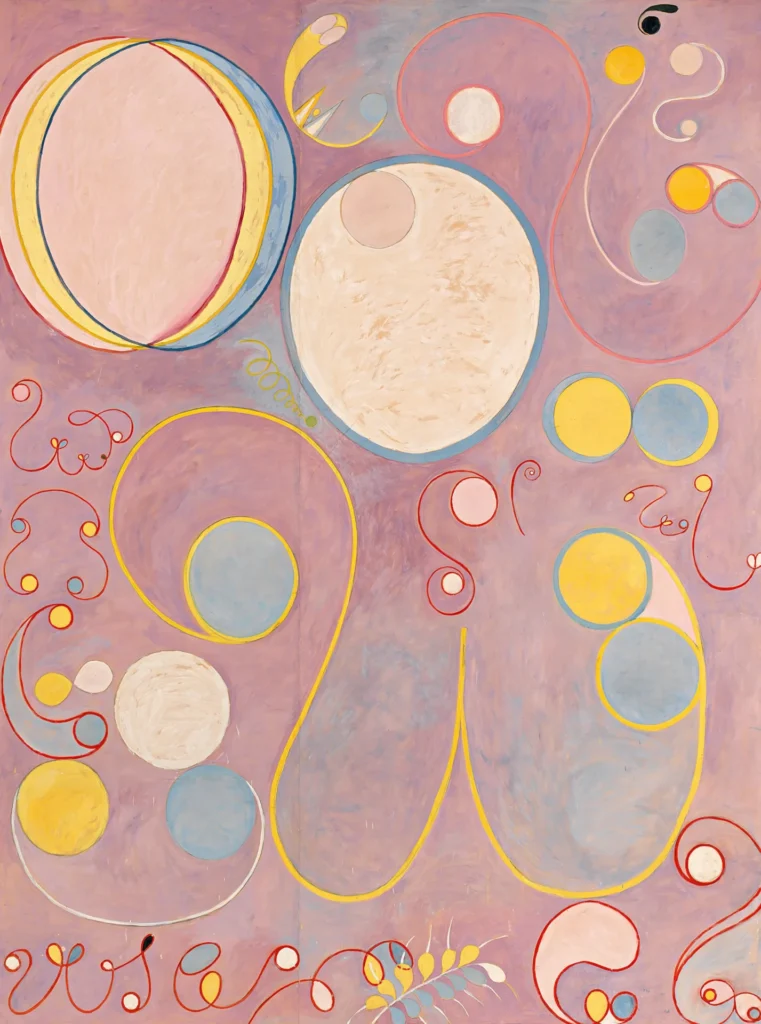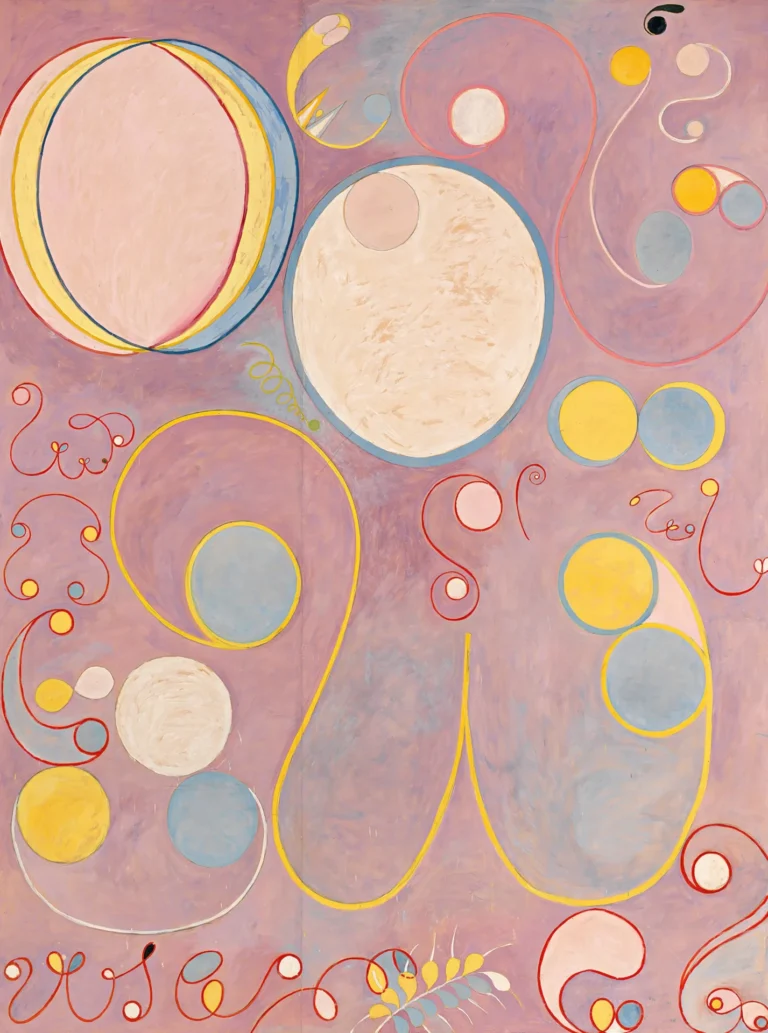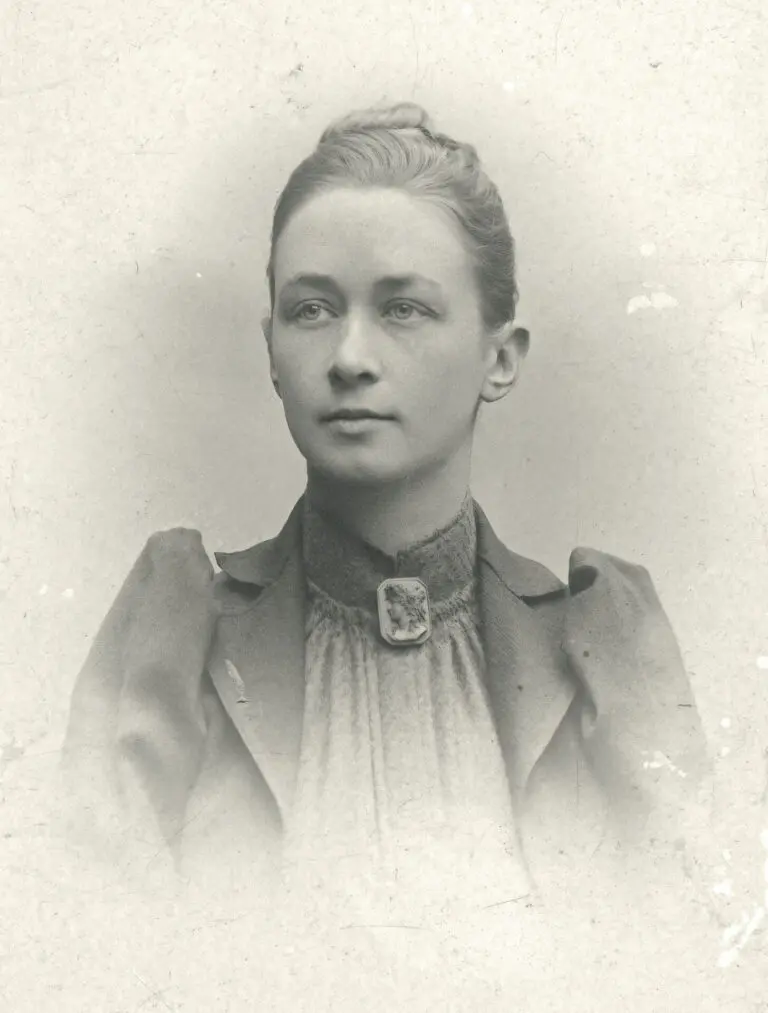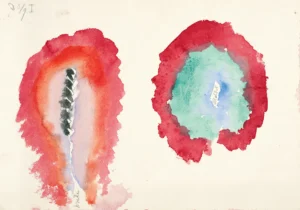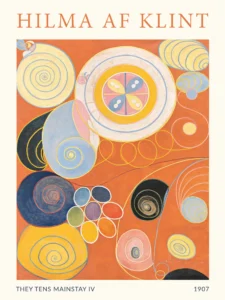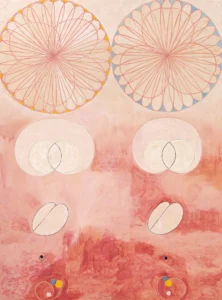The Ten Largest, No. 8, Adulthood (1907)
Created in 1907, The Ten Largest, No. 8, Adulthood by Hilma af Klint is a monumental painting (328 cm x 240 cm) that reflects her deep interest in spiritual evolution. Part of the larger series 'The Ten Largest,' it symbolizes the stage of adulthood through vibrant colors and abstract forms, showcasing af Klint's innovative approach influenced by spiritual and theosophical beliefs. This artwork reveals the artist's exploration of non-verbal communication with the spirit world and her quest to articulate profound human experiences.
1907
About the Artwork
Hilma af Klint, a pioneer in abstract art, created The Ten Largest, No. 8, Adulthood during an intense 40-day period in the autumn of 1907, as part of her larger project 'Paintings for the Temple.' The piece represents her exploration of human life stages, with particular focus on adulthood, reflective of her deeper spiritual inquiries and connections with the occult via her group 'The Five.' This artwork is not just a representation of adulthood but a manifestation of the artist's desire to communicate complex philosophical ideas through abstract language. Despite her revolutionary approach, af Klint's work remained largely unrecognized until years after her death, highlighting a remarkable journey from obscurity to celebration in the art world.
Did You Know
Hilma af Klint is often credited as one of the first abstract artists, with her work predating key figures such as Kandinsky and Mondrian, positioning her as a trailblazer in a movement that would redefine the art world.
The inspiration behind af Klint’s paintings came from her spiritual practices and experiences with a group known as ‘The Five,’ who sought to connect with higher consciousness and explored themes of spirituality through art.
Although af Klint produced a vast body of work, including over 1900 pieces, she chose not to display them during her lifetime, fearing that the public would not understand the spiritual insights contained within them.




